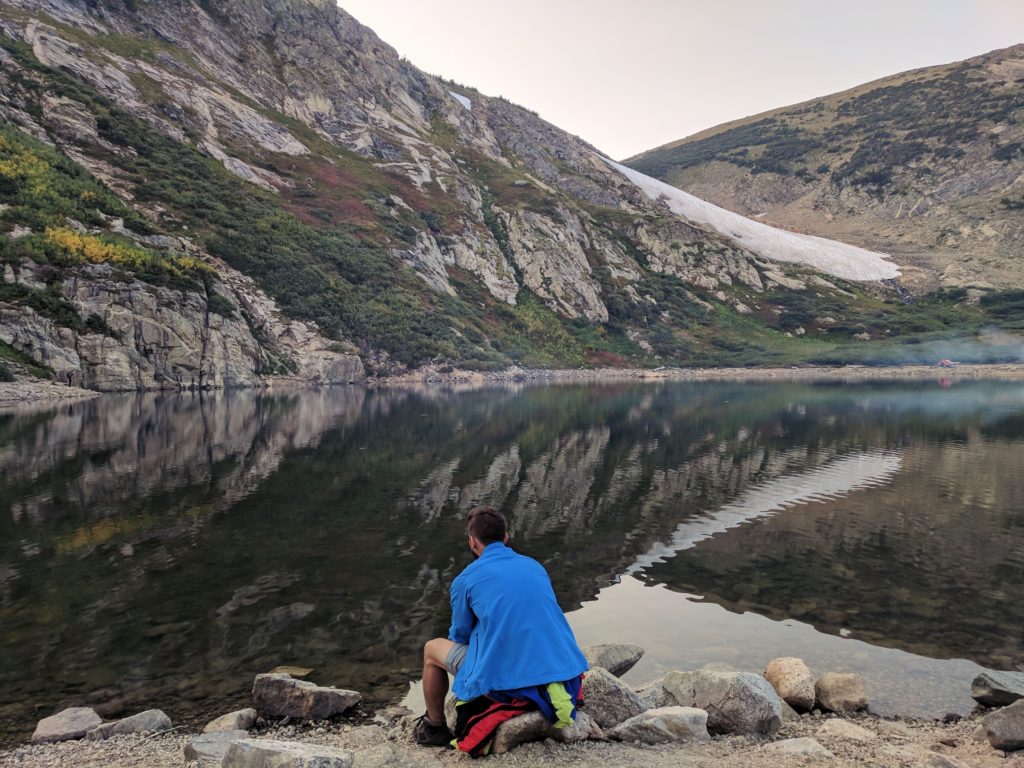Beginner’s Guide to Hiking in Colorado Part II

You learned common hiking terms, how to pick and track your hikes, and things you should bring in Part I. In Part II, we’ll go over how to stay safe, where you can find friends to go exploring with, and some other helpful tips before your next adventure!
Safety + wildlife
Education
If you’re interested in getting information from trained professionals, here are a few places that can help:
- Recreation Equipment Inc., aka REI, is a big box outdoor retailer that hosts a variety of classes and events at their stores. Prices can vary, but you always get a discount if you’re a member which will be worth it if you need to start building your outdoor gear stash. Here’s the REI Denver Flagship site.
- The Colorado Mountain Club also offers courses in hiking & scrambling, wilderness survival, and more.
- If you’re wanting to get into more extreme sports like rock & ice climbing, mountaineering, avalanche training, or skiing/splitboarding — check out the Colorado Mountain School.
Weather
Always check the weather before you go. Always. This is extremely important for all hikes, but especially ones with summits at higher elevations and above the tree line. It can be life threatening to be stuck up there during a storm and not just because of the rain or even hail, but getting struck by lightning. There’s a rule of thumb that says to be below the tree line before noon for your safety and protection.
Accuweather, Dark Sky, NOAA Weather are all great weather apps to use. I’ve also gotten in the habit of checking the wind gusts after an instance of getting up into the mountains when we realized the gusts were just too much to handle.
Wildlife
One of my favorite Instagram accounts and a perfect doodle for this post. Follow Brendan if you like a good giggle.
View this post on InstagramA post shared by Brendan Leonard (@semi_rad) on
These are some animals you might come across on a hike. Educate yourself on what to do if you encountered any of these beautiful creatures, but very good to know for black bears, mountain lions, moose, and rattlesnakes in particular.
Animal sightings will vary by location but what remains constant is leaving them alone and most importantly, DO NOT FEED THEM. They can lose their fear of people and become aggressive. Yes, this includes the cute little chipmunks too. While you’ll be less afraid of being attacked by a chipmunk than a bear, cheez-its are simply not a part of their regular diet. Please don’t hurt their health. Here’s an article from the Wildlife Land Trust with four reasons why you shouldn’t feed wildlife.
- Bighorn sheep
- Birds
- Bison
- Black bears
- Chipmunks
- Coyotes
- Deer
- Goats
- Elk
- Marmots
- Moose
- Mountain lions
- Pikas
- Rattlesnakes
Finding friends

Whether you’re new to the area or looking to make new friends, I strongly recommended joining these two Facebook groups. They’re full of fun, kind women who are interested in exploring the outdoors. I see so many posts from people who just moved here and are looking for people to go hiking with, girls asking for trail recommendations, advice on different kinds of gear, and so much more. I have used it for finding advice on places or suggestions on how to patch up a broken tent screen, trying to sell dog hiking gear my pup outgrew, and making some new lady friends of my own to go out on a hike!
Other tips
- Let someone know what hike you’re doing and what time you left your house. Service can be sparse sometimes, especially in the mountains. Give them a rough ETA on your arrival so they know when you’re starting the trail. If I have service at the trailhead, I text them to let them know I’m starting for real. Same thing when I leave. Give them the heads up you’re on your way home. Maybe even send a few sweet pictures you took and bring them with you next time.
- Pack out your trash. Mother Natch will appreciate it and so will everyone who enjoys that trail. Trash cans full? Put it in your trunk or back seat and throw it out at the nearest gas station or when you get home.
- If you’re still getting adjusted to the altitude, take all the time you need on hikes. Look for trails with lower elevation gains (like less than 500ft) and pay attention to what the starting elevation is. Stay hydrated and pack a Gatorade or two for some extra electrolytes to have handy if you need it. I’ve also seen posts in both of the Facebook groups above from women who just moved looking for other people who might enjoy a slower pace. Strength in numbers!
- Pay attention to where you park. I’ve seen people park right in front of “No Parking” signs and it’s so upsetting. Whether it’s blocking traffic or ruining vegetation, park in designated areas only.
- People going uphill always have the right of way, so if you’re coming downhill step to the inside of the trail to let them pass.
- Learn & follow Leave No Trace principles.
Time to get out there!
I hope this gives you the nudge you need to start experiencing the natural beauty Colorado has to offer. This was a lot of information but only scratches the surface! If there was something you were interested in learning more about, let me know in the comments!

Meet Sarah
Welcome! I’m Sarah. I started this blog to be a resource for others around a few of my favorite things: living in Colombia, DIY projects, places traveled, and day-to-day life. My hope is that it can a place of inspiration and encouragement to help you plan the next project or adventure of your own!



